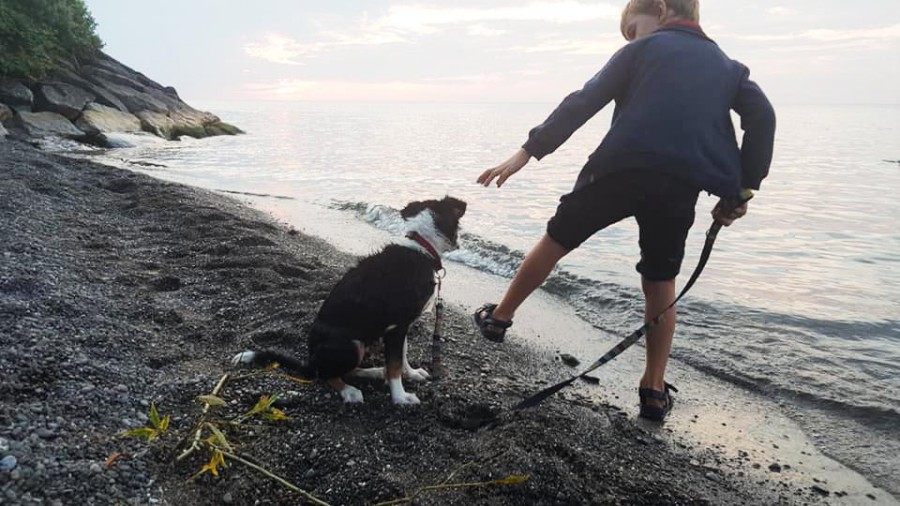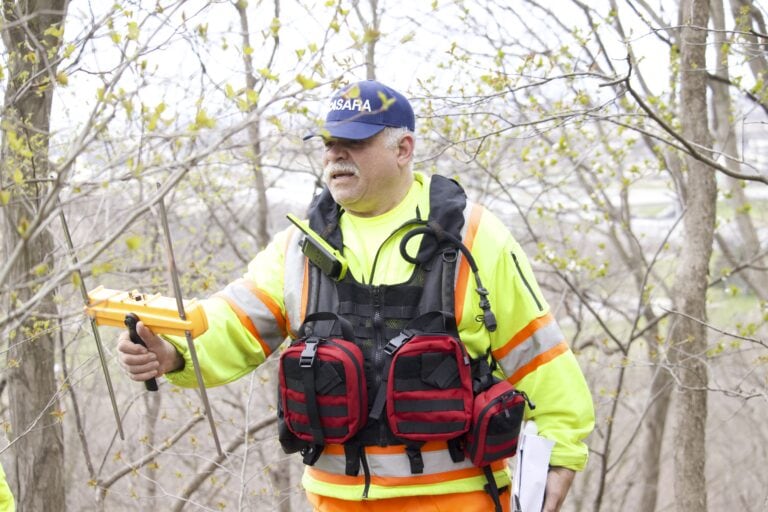Town of NOTL warns people to avoid beach at Ryerson Park while water is tested
UPDATE: The Ministry of Environment said results of a Wednesday test showed no indication of blue-green algae.
A dog that died suddenly Tuesday after swimming in Lake Ontario at Ryerson Park beach may have been poisoned by blue-green algae, a Niagara-on-the-Lake veterinary hospital says.
The Town of Niagara-on-the-Lake is warning people to avoid the area and has put signs on benches in the park warning everyone to stay out of the water. Environment ministry staff tested the water Wednesday as part of an investigation into the incident, the town said.
Conor MacNeill, a William Street resident and owner of the year-old border collie named Jack, said the incident happened while his seven-year-old son Declan was on a playdate with friends at the beach on Lake Ontario.
"The kids were swimming too. Jack was jumping around after them and he just came in and he laid down on my feet and I thought he was just sleeping from being tired. And 10 minutes later, we got up to go and he didn't get up," he said.
He and his wife Paula rushed Jack to Upper Canada Animal Hospital on Mary Street, where he died.
"He was kind of dead, brain dead, they thought, when we got there."
He said the veterinarian said it looked like "all the symptoms of the blue-green algae poisoning."
The animal hospital posted a warning on its Facebook page Tuesday to advise of the potential threat.
"We have seen a patient today that was potentially exposed to a toxic cyanobacteria at Ryerson Park beach in Niagara-on-the-Lake," the post reads.
"Cyanobacteria can cause both neurological and liver toxicity and can be rapidly fatal. Public health and the Ministry of Environment have been notified and are investigating. Out of an abundance of caution, we recommend avoiding any swimming (for you or your pets) at this location until they can complete their investigation," the vet hospital said.
As of 5 p.m. Wednesday, signs were affixed to four benches in the park, the closest about 25 metres from the walkways to the water. No signs were erected at the top of the stairway or path. Several people were swimming, including a mother and her young daughter, a senior and a couple had their small dog cooling off in the water.
They all got out when a nearby resident cautioned them about the warning signs. None of them showed any immediate ill effects. Later that evening and on Thursday, people were in the water, having missed seeing the signs attached to park benches.
By mid-afternoon on Thursday, two days after the dog died, town workers had posted warning signs directly at the two entrances to the park's beach area.
Niagara Region public health spokesperson Meredith Maxwell emphasized the presence of blue-green algae had not yet been confirmed. "At this point it is a suspicion being investigated and not a diagnosis or confirmed cause of illness. This is currently a Ministry of Environment, Conservation and Parks and veterinary investigation," she told The Lake Report.
"We can’t comment or take action until they complete the investigation and we’re able to get true information," she said, adding that pets and people should always avoid consuming beach water.
The World Health Organization says humans exposed to blue-green algae can be affected with "a range of symptoms including skin irritation, stomach cramps, vomiting, nausea, diarrhea, fever, sore throat, headache, muscle and joint pain, blisters of the mouth and liver damage."
"Swimmers in water containing cyanobacterial toxins may suffer allergic reactions, such as asthma, eye irritation, rashes, and blisters around the mouth and nose. Animals, birds, and fish can also be poisoned by high levels of toxin-producing cyanobacteria."
The deadly algae can kill a pet quickly.
"A dog can basically just drink a little bit of the water and it can be 10 minutes and they're dead. It's so crazy. I've never heard of anything like this," MacNeill said.
"He was the healthiest dog, strongest dog. We actually had him one year to the day yesterday. We picked him up last year."
He said Jack helped the family cope with the global pandemic.
"It's impossible to imagine the last six months without Jack. He's given Declan so much entertainment and joy."
MacNeill said the main thing he wants to get across is that this toxic algae exists and to warn other dog owners to be careful.
"There's a chance it could have been something else but it doesn't seem likely. There's a very high chance that this is what it is. But regardless, until we know for sure what's going on down there, nobody should be going into the water with their children or dogs."
He said he wishes there had been testing and signs at the beach to warn dog owners of the potential risk.
"I think it goes without saying with the number of people that are swimming down there … it should be getting tested."
MacNeill said he wants to spread the message about the algae.
"The word on this really needs to get out. For Ontario, Jack's story is a very big story. We did everything right with him. I've never heard of this algae. I don't think a lot of people have heard of this algae. It blooms when the lake gets to a certain temperature apparently."
He said if he'd known about the algae sooner, he wouldn't have taken his dog to the beach.
"We're talking about such a beautiful, healthy, full of life dog, just coming into his own. It's so sad."
An Ontario government webpage highlights concerns about cyanobacteria. "One key factor contributing to the growth of blue-green algae is the amount of available nutrients such as phosphorus and nitrogen," it says.
"Blue-green algae blooms can be caused by agricultural and stormwater runoff as well as leaching from septic systems. In Ontario, phosphorus tends to be the nutrient that influences the growth of algae."
The toxic algae, which oxygenated Earth's atmosphere two billion years ago, is toxic to pets, and was responsible for killing three dogs in North Carolina last year.
MacNeill said the day they were at the beach, the water was really wavy, so he suspects the algae might have come from elsewhere in the lake.
"If this did blow in from way out in the middle of Lake Ontario, it could have landed anywhere, and people need to know that this thing exists. If that story gets out, (across) Ontario potentially, if one other dog gets saved by somebody not going down there, that would mean a lot to us."
Niagara public health has information on the algae at https://www.niagararegion.ca/living/water/blue-green-algae.aspx.














